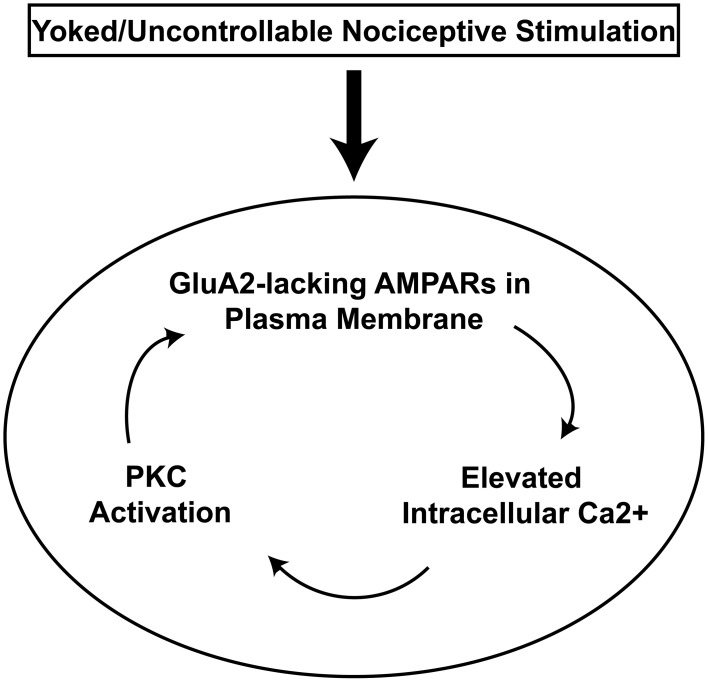Figure 6.
AMPA receptor positive feedback-loop hypothesis for spinal metaplasticity. Spinal AMPARs are hypothesized to rapidly traffic to the plasma membrane in response to uncontrollable nociceptive stimulation in the periphery (box). Because GluA2-lacking AMPARs function as calcium ionophores, their localization to the membrane generates a cascade of increased intracellular calcium followed by activation of intracellular calcium detectors such as PKC that can then produce further increases in trafficking of AMPARs to the plasma membrane. This feedback loop (oval) of increasing AMPA receptor numbers may account for the observed pattern of saturation of spinal learning plasticity, spinal learning deficits, and nociceptive hyper-responsiveness that is observed after yoked/uncontrollable stimulation training.

